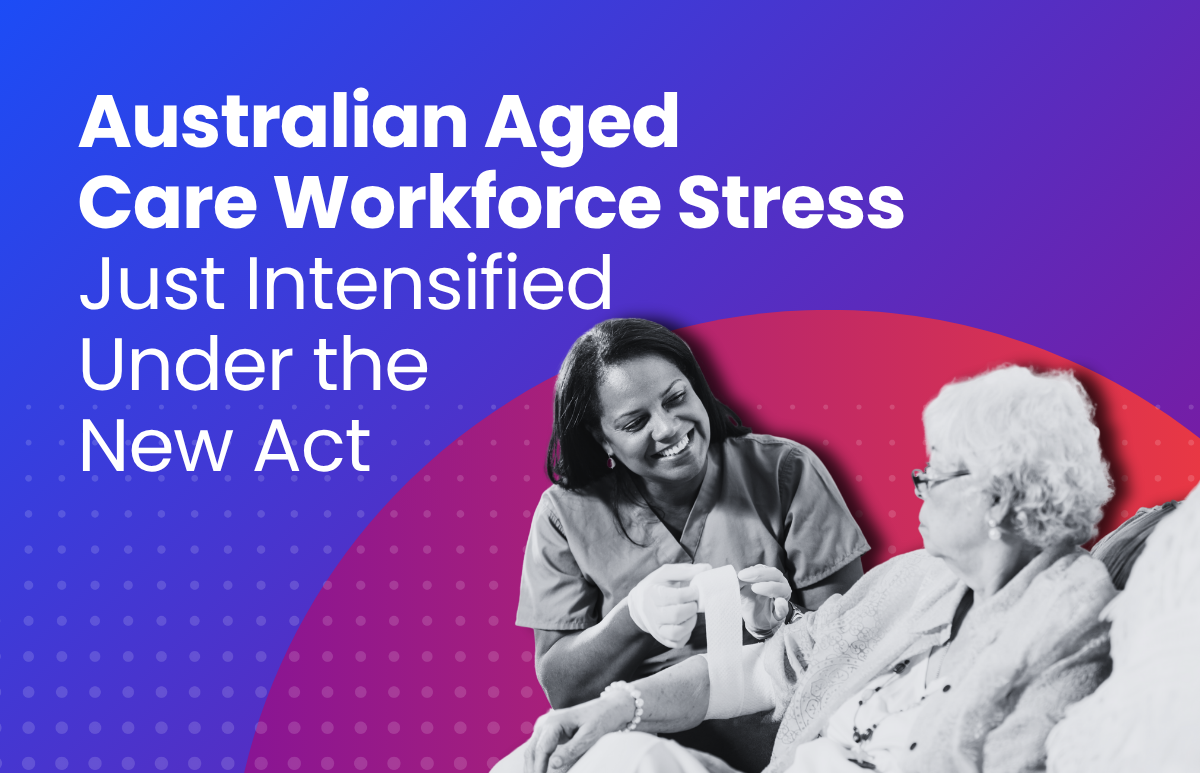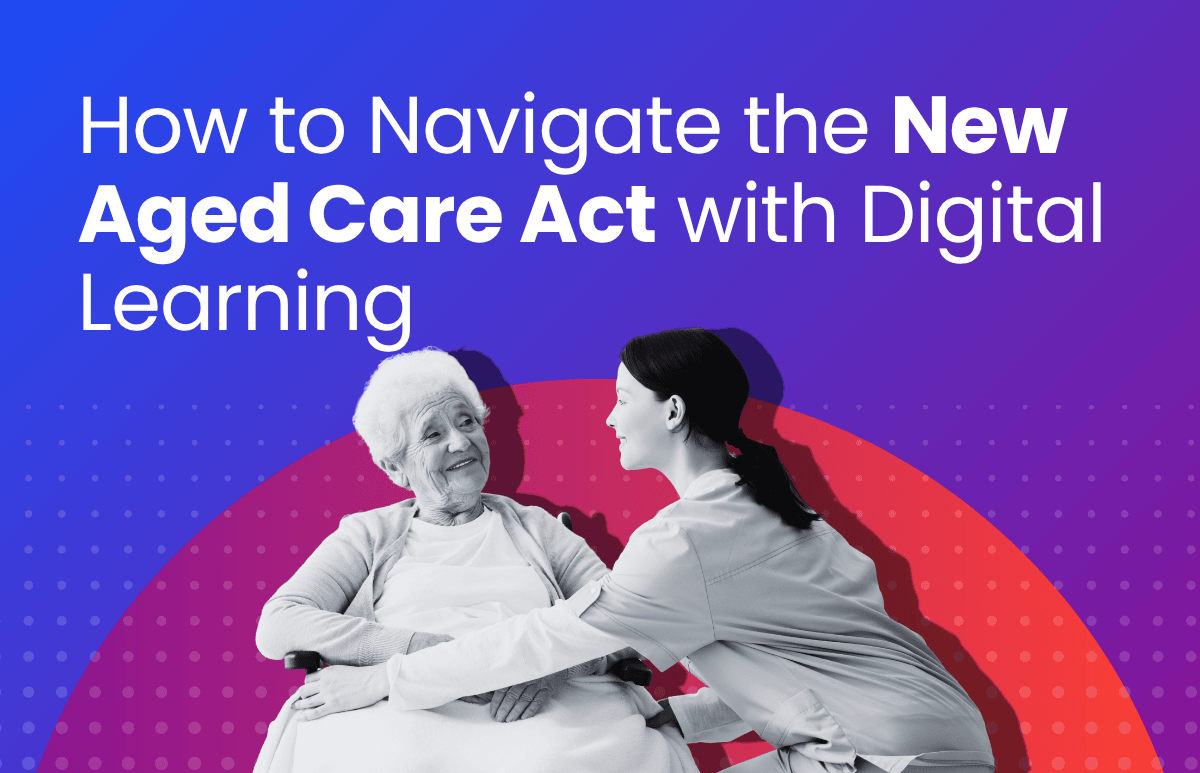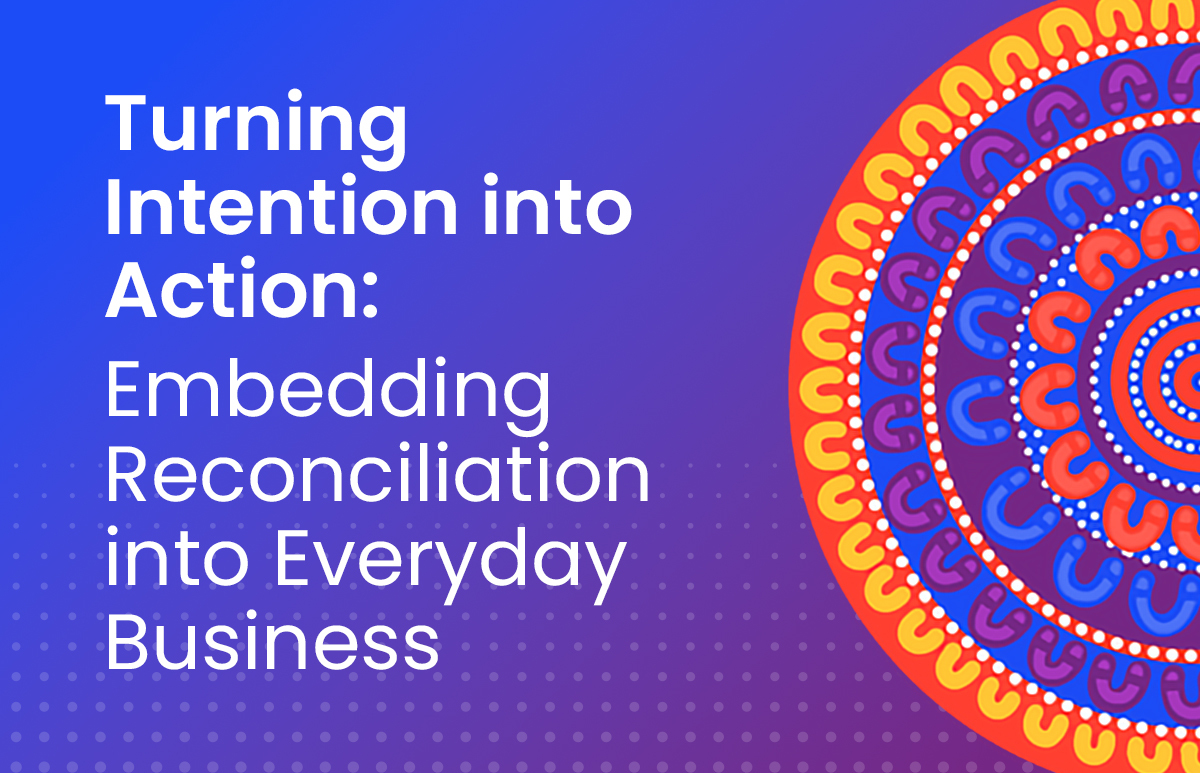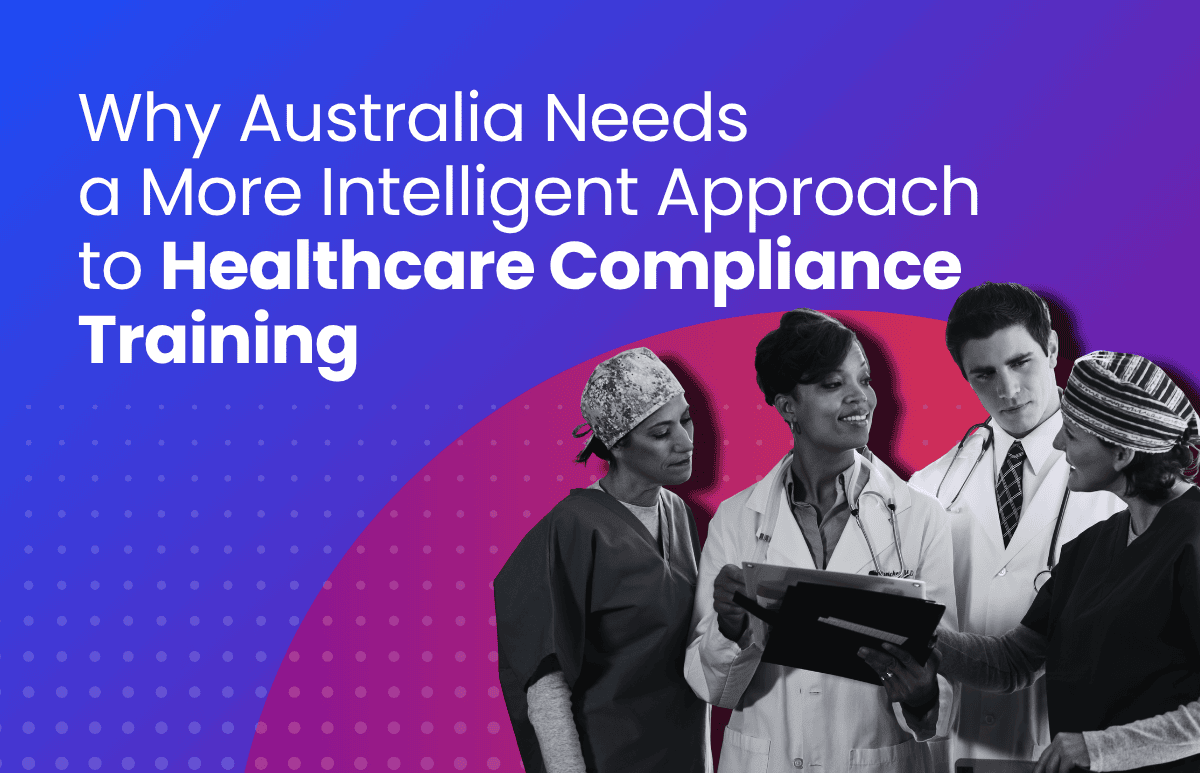Australian Aged Care Workforce Stress Just Intensified Under the New Act
With Australians living longer and a large wave of baby boomers entering their later years, aged care’s workforce challenge isn’t creeping up anymore. It’s already here. And it’s becoming harder now the Aged Care Act has taken effect.

The Act has brought a sharper focus on compliance, workforce capability, resident rights and the evidence providers need to supply in every audit. Demand for aged care services keeps rising, but the expectations on providers have risen just as fast. If teams can’t maintain a skilled, supported and documented workforce, both access to care and care quality will be under pressure.
HR leaders are right in the middle of this shift. Recruitment, onboarding, training, policy acknowledgements, credential checks, and audit readiness are now woven tightly together. If one part slips, it can flow all the way through compliance.
What does the Aged Care Act now expect from providers?
Since 1 November 2025, the strengthened Act has changed the day to day reality inside aged care. It’s no longer enough to have good intentions or informal processes. Providers need evidence that every worker is competent, credentialled, trained and supported to deliver safe care. And they need that evidence ready at the drop of a hat.
Here’s what’s now front and centre under the Act when it comes to staffing.
Stronger evidence of worker capability
Providers must be able to show that every worker has completed the right training, holds the right certificates and understands the organisation’s policies. This includes training related to Quality Standards and any service changes you may go through.
Audit ready records
Audits can now happen with shorter notice and will be more regular and exacting. A regulator may want to look at records, take evidence and potentially visit the site. That means HR teams need clear, centralised and current documentation so they’re not scrambling.
Credential tracking and renewals
Expired employee credentials will affect compliance but also bleeds through to staffing levels. Providers need a way to keep track of expiry dates, reminders and any new requirements.
Safe staffing levels and coverage
New minimum care minutes and registered nurse (RN) coverage require accurate rostering, payroll, and current workforce data. Providers need to know who’s qualified, who’s available and who’s cleared to work.
Consistency across multiple sites
Multi site providers need consistent processes for onboarding, training and compliance so every site can meet the same standard of care.
Under the Act, manual systems make all of this harder. Paper forms, scattered spreadsheets and email trails increase the risk of error, delay and missed documentation. It’s clear that manual HR work is increasingly untenable and the sector’s labour shortages make it even harder to keep up.
Why providers are turning to stronger workforce systems
Aged care providers are dealing with a growing level of complexity amid pre-existing staffing pressures. It’s become abundantly clear that manual processes simply can’t keep up with the pace and scrutiny of the Act.
But it’s not just about the new Act. Organisations that streamline (or better yet, unify) recruitment, onboarding, training and HR data have fewer compliance problems and a lower administrative burden. All good news for providing excellent care and running a tight ship.
The sector is currently experiencing strain from:
- Countless steps in recruitment and onboarding
- Scattered documentation
- Missed checks and renewals
- Staff joining and leaving at faster rates
- Slow, manual learning management
- Time spent digging for records before an audit
A unified system that connects recruitment, onboarding, learning, payroll, and workforce records can make an incredible difference. It helps providers reduce admin hours, cut time to productivity for new starters and stay ACQSC ready.
Addressing the shortage of skilled workers
The aged care sector’s still working through a significant shortage of skilled workers. According to the Australian Institute of Health and Welfare, the sector will need an additional 100,000 workers by 2050 to meet growing demand.
If we look at figures from the Australian census dating back to 2012, we can see that the push for more workers is well underway.
This shortage increases pressure across almost all areas of aged care HR. Providers need reliable systems that help them hire faster, onboard more consistently, and keep workers competent and engaged.
What are the main staffing issues?
Nursing shortages
Registered nurses remain in short supply across Australia, especially in residential aged care and regional areas. Continuous RN coverage is now a requirement, which places significant pressure on recruitment and retention.
Skill gaps
Gaps remain across areas like allied health, dementia care, palliative care and digital literacy. These skill gaps affect care delivery and compliance. As many Australian providers look overseas for staff, it’s increasingly important to shore up any skill gaps and ensure local standards have been met with the requisite skills.
Using an LMS like ELMO Learning with prebuilt (and customisable) course libraries can be a powerful and simple way to close gaps.
ELMO Course Library Content
Recruitment competition
Aged care is still competing with hospitals, clinics and other health settings for a limited talent pool.
Tackling high turnover rates and burnout
High turnover continues to be a major pressure. In ELMO’s most recent Employee Sentiment Index (ESI), we found that 40% of employees are experiencing burnout, and 36% are turning up to work unwell, which points to fragile engagement and a heightened risk of turnover.
Then you have other stressors:
- Emotional and physical demands are high. The work’s meaningful, but it’s challenging and often exhausting.
- Wages aren’t keeping pace. Pay remains a challenge, particularly compared with other parts of the health system. In the ESI we found that 45% of Australian employees feel their income is insufficient, with 12% stating they are ‘nowhere near’ meeting their and their family’s financial needs.
- Australia’s aged care workforce is ageing. According to the Aged Care Workforce Census, nearly a quarter of workers are over 55. Many are nearing retirement, which raises the staffing temperature even more.
According to a 2022 survey by the Aged Care Workforce Industry Council, turnover in the aged care sector was running at an alarming 33%, significantly higher than the national average for other sectors.
If turnover rises, it’s obvious that more onboarding will be needed, more training must be tracked and HR teams face even more compliance and staffing busy work.
Key areas that require attention
Training and upskilling
According to ELMO’s 2025 HR Industry Benchmark report, upskilling, cross-skilling and reskilling employees was the top challenge for Australian businesses, highlighting the pressure on organisations to build capability, and the opportunity to design a modern and effective L&D strategy.
The new Act certainly increases the importance of demonstrating capability. Providers must show that workers have completed the right training, hold current certificates and understand policies. Staff also need support to complete training related to the Act, the Quality Standards and service changes.
ELMO’s ESI shows the link between development and retention. We found that four in five employees across Australia completed some form of training in the past year, yet one in five didn’t. Three in five say they’d consider leaving if their career growth stalled.
Cultural competency
Supporting a multicultural workforce helps ensure respectful and responsive care. When more and more skilled workers from diverse backgrounds and nations are being hired into the Australian aged care sector, and Australia’s ageing population becomes even more multicultural, this is especially salient.
Succession planning
Younger workers need clearer pathways into the sector. Providers can support this with purposeful roles, development options and supportive culture.
The issue with attracting younger workers
The aged care workforce tends to skew older, and the sector can struggle to attract younger workers who don’t always see the career pathways as clearly. But, providers who offer purpose, support, flexibility and development will have a far stronger chance of attracting and retaining younger entrants to the sector.
Younger workers care about:
- Meaningful work
- Clear career pathways
- Flexible options
- Competitive pay
- Accessible learning
If you’re on top of these needs, you’ll become a far more appealing provider than your competition.
Now is the time for HR to act
HR leaders will play an increasingly central role in how providers navigate the new environment. While new policy and community expectations shape the landscape, HR teams are in a unique position to influence the systems and processes that keep the workforce safe, supported and compliant.
Progress can come from:
- Stronger and more consistent onboarding processes, especially across sites
- Reliable training and competency tracking
- Connected recruitment and HR workflows
- Accurate and accessible workforce records
- Clear development pathways
- Proactive workforce planning
The workforce challenges and changes are undoubtedly significant, but with thoughtful planning and the right foundations and solutions, aged care organisations can build teams that are ready for the expectations of the Act and the needs of an ever growing ageing population.
To learn more about the Aged Care Act and how HR leads can stay audit-ready check out our Q&A here.
Ready to move from pressure to performance?
See how ELMO’s all-in-one HR platform helps aged care providers stay compliant, confident and ready for anything.

 HR Core
HR Core 









